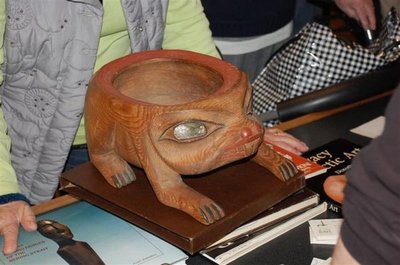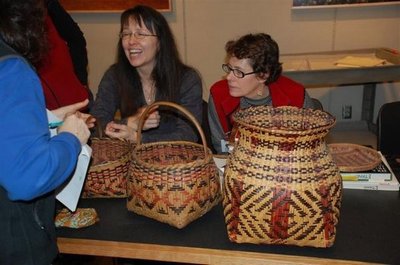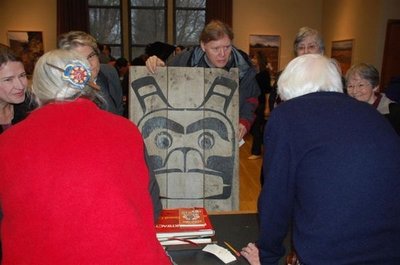January 21, 2010
Got an odd old item? Bring it to Artifact ID Day at the Burke Museum
Got an odd historical or cultural artifact or a specimen from the natural world lying around that you’ve always wondered about? Maybe curators at the Burke Museum can help you figure out what it is.
The Burke Museum will hold its 25th annual Artifact ID Day from 1 to 4 p.m. Saturday, Jan. 23, at the museum. Admission to Artifact ID Day is included with admission to the museum and is free for Burke members, UW students, staff and faculty.
Bring an unidentified object along — you might learn about where it came from or stories about its history. Curators from the Burke will attempt to identify cultural artifacts from the Northwest Coast, Pacific Islands, and Asia, in addition to specimens from the natural world.
Due to the event’s popularity, there will also be a limit of three items per visitor.
“I’ve seen people come in with armloads of all kinds of things, like they’ve cleaned out their closet,” said MaryAnn Barron Wagner, the Burke’s director of external communication. “And it’s fun — you watch the line develop out the door. Everyone has something unique.”
Barron Wagner also stressed that the Burke does not offer monetary appraisals of the items brought in. “A lot of people come expecting to get a value, and so leave disappointed. But we do not do values — we’re not in that business. We’re in the business of collecting and preserving objects for the good of the community.”
Julia Swan, Burke public relations representative, said most of the items brought in by the public are “thing they’ve had in their possession for a while or things they inherited from someone. When that is the case, a good guideline for people is to save any documentation about the item that they may have” and bring it along to Artifact ID day “so our specialists have as much information as possible about the object.”
Remember that you are not free to bring in — or to even take — objects on land owned by other citizens, agencies or municipalities, or by the state.
Swan said if you find an object on the ground and are uncertain about whether you should remove it for ID day or any other purpose, “the best general piece of advice is: If you think you’ve found a cultural or natural artifact buried in the ground, call the professionals at a museum, like the Burke, or government agency who can advise you about what to do next.”
Barron Wagner also asked visitors to please not bring in their rock collections. “They are usually just rocks,” she said. And no furniture either, please.
She said that over the years, Burke curators have seen all manner of items — totem poles, Native American baskets, blankets, masks, even a Japanese sword. It’s a great deal of fun for the staff and curators, too, especially when they spy something really interesting. “As (the curators) see people approaching you can literally see their eyes light up from a distance.”
For more information about the Burke Museum and its programs, visit online at www.burkemuseum.org.



